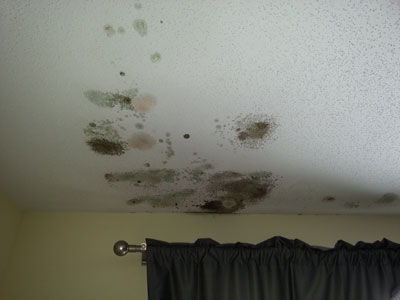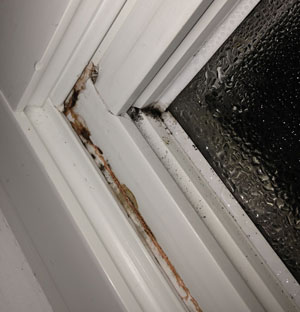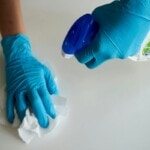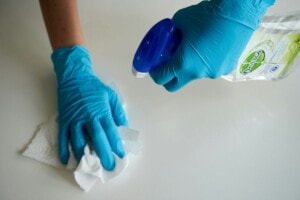
Mold is not just an eyesore — it’s a serious problem that can have serious effects on your health and safety. But because mold in apartments, houses, and other living spaces is such a common occurrence, many homeowners mistakenly believe that it’s completely normal and even harmless.
The truth is that mold is neither normal nor harmless. Mold is one of the most persistent and destructive problems that can affect a home. Here’s some expert advice for dealing with mold: detecting, removing and preventing it.
1. Identify sources of excess moisture to find the root of mold problems.

- leaky pipes;
- poorly sealed windows and doors;
- foundation cracks;
- roof damage;
- poor ventilation; and
- condensation.
Pay particularly close attention to your basement, attic, bathroom, crawlspace and cold storage room, as these places are all more likely to experience moisture problems. Also, make sure that your walls, hardwood floors, carpets and furniture remain dry. This is important because mold feeds off organic matter, which is typically found in drywall, wood, paper and fabrics.
Renovating your home?
Find out what your home's worth, edit facts, and see the impact of home projects.
2. Look for visible signs of mold.
Renovating your home?
The most common ones include:
- damp, musty or earthy odors;
- bubbling paint or wallpaper;
- condensation on walls;
- deformed floors;
- water stains and discoloration of walls; and
- black spots on walls.
3. If you suspect a mold problem, get a mold test.

While you can purchase a DIY mold testing kit, professional testing is far more reliable and safe. After all, you have someone with years of experience and knowledge assessing the situation. While a visual mold inspection is useful in developing a remediation strategy, a mold test is the only way to confirm the presence of mold. It also gives you other important information, like the species of mold you’re dealing with and the concentration of mold spores in the air.
And because there are thousands of different species of mold — some more dangerous than others — a mold test will let you know if you’re being exposed to toxic species like Aspergillus, Alternaria and Stachybotrys (also known as black mold).
4. Pay attention to any changes in your health.
Unusual or persistent symptoms that have no apparent cause can actually be caused by mold exposure. Here are some of the most common reactions to mold:
- eye, nose and throat irritation;
- difficulty breathing and shortness of breath;
- coughing and wheezing;
- headaches;
- dizziness and nausea;
- fatigue; and
- worsening of allergies and asthma.
Not everyone will be equally affected by mold — some people may experience intense and debilitating symptoms while others may have no reaction at all. The way you react to mold depends on your individual sensitivity, the type of mold you’re exposed to and the duration of the exposure.
5. For a natural and effective way of removing a small amount of mold, use baking soda dissolved in water.
Baking soda’s pH of 8 is high enough that mold cannot withstand it. Using baking soda can help prevent mold growth too, because it absorbs moisture.
Contrary to popular belief, bleach is not an effective mold cleaner as it only removes surface contamination. It does not kill mold that is growing on porous materials such as wood, drywall or carpet. On top of that, bleach is an extremely strong and corrosive chemical that can be harmful to your health.
6. Unless you’re dealing with a very small or isolated mold problem, it’s best to call an experienced mold professional.
Proper mold remediation is a complicated process that involves sealing off the affected area to avoid cross-contamination; using powerful, industry-standard equipment to get rid of all mold spores; disinfecting using eco-friendly products; and disposing of all contaminated materials safely.
Looking to save money on your mortgage?
7. To prevent mold from forming or growing back, the most powerful thing you can do is to control moisture.
If you find and fix moisture problems early on, you can minimize your chances of developing mold problems and prevent expensive damage to your property. Here are some ways to reduce moisture in your home:
- Ensure proper air exchange by opening windows and doors regularly.
- Use a dehumidifier if the relative humidity inside your home is above 50 percent.
- Seal foundation cracks.
- Fix leaky pipes, faucets and appliances promptly.
- Turn on exhaust fans when showering and cooking.
- Make sure your gutters are clean and that your downspouts are directing water far enough away from your home.
About Ivan Ward and Mold Busters
Ivan Ward is a certified technician at Mold Busters. Since 2005, Mold Busters has provided reliable air quality testing, mold inspections and removal and remediation services in Ontario and Quebec. Mold Busters’ experienced and certified technicians offer same-day appointments and a wide range of affordable services to suit each client’s needs. For fast and effective service in residential or commercial buildings, Mold Busters can help.
Note: This is a guest post; the views and opinions expressed are those of the author and do not necessarily reflect the opinion or position of Redfin.



























 United States
United States Canada
Canada